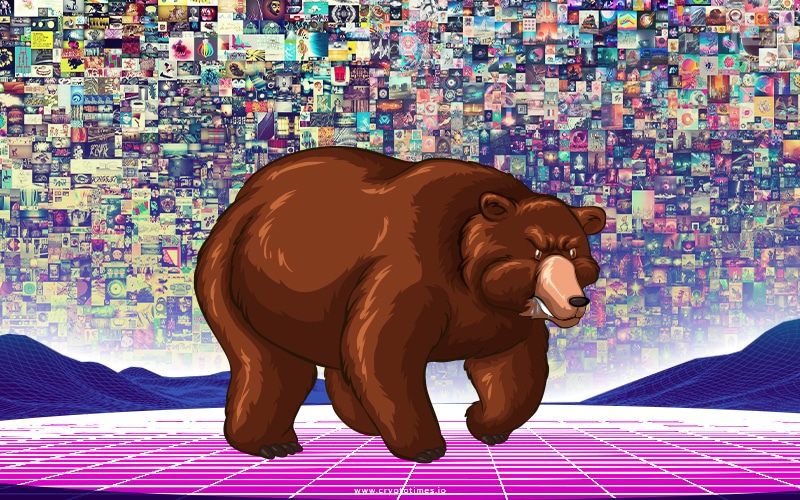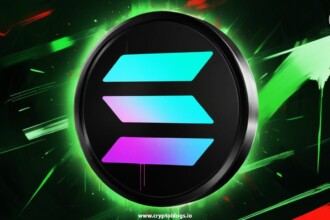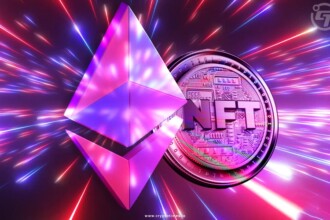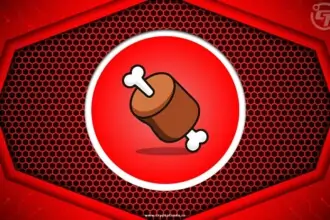The past few years have been a roller coaster ride for both the crypto and NFT markets, impacting investors and innovations alike. Following the decline of Terra Luna in May 2022, a wave of turbulence swept through the realm of digital assets, ushering in a bear market phase. However, this bear market wasn’t confined solely to the cryptocurrency realm; it also posed challenges for NFT artists, causing many to turn away from the market during this period.
In a bear market, NFT artists often face a drop in demand and decreased prices for their digital artworks and collectibles, as investors become less interested in speculative assets. This results in reduced income and potential difficulties in sustaining their creative pursuits. Moreover, the bear market environment might prompt collectors to be more discerning, favouring established artists over newcomers. This dynamic makes it particularly challenging for emerging NFT creators to gain recognition.
In an effort to shed light on the often unspoken struggles of NFT artists and how they are addressing the challenges posed by the NFT bear market, we have crafted this article to provide valuable insights into the world of NFT artists. So, without further ado, let’s delve into the topic.
Statistics of the NFT Bear Market
If we particularly talk about the leading NFT marketplace, Opensea, the overall NFT market cap tumbled drastically in one year. According to data provided by DappRadar, the overall number of NFT sales also decreased by 23%, amounting to 3.7 million.
Polygon, on the other hand, saw a remarkable increase in NFT trading, with 772,424 traders participating, which accounted for a significant 27% of the total sales count. Unfortunately, the month also saw the loss of $363 million in cryptocurrency assets due to hackers exploiting vulnerabilities in smart contracts and deceiving investors.
Is the NFT Market Dead, or Was it Just a Bubble Burst?
The concept of Non-Fungible Tokens (NFTs) gained significant popularity in the mainstream around the year 2020. However, the technology and concept of NFTs had been around for a few years prior to that. The idea of NFTs can be traced back to the launch of projects like CryptoPunks in 2017 and CryptoKitties in late 2017.
These projects introduced the idea of using blockchain to create and trade unique digital collectibles. In 2020, several factors contributed to the surge in popularity of NFTs, including easy accessibility to a wider audience, royalties for NFT artists, inclusiveness in various sectors, and obviously the success of top-notch NFT collections like NBA Top Shots.
However, the year 2021 to 2022’s second quarter has been a golden period of time for NFT artists as a sharp spike has been seen across the market. During this time, a number of NFT projects and collaborations took place in the NFT space. Some of these lucrative NFT projects also helped digital artists to build their reputations, while others have capitalised on their already-built legacy in the digital art space.
By 2021, NFTs had become a mainstream topic of conversation, with various industries exploring their potential beyond just art and collectibles, including music, sports, virtual real estate, and more. However, it’s important to note that the NFT market, like any other speculative market, can experience periods of rapid growth and subsequent adjustments.
However, the NFT market took a U-turn in June 2022 after sales sank sharply and the price of popular NFT collections plummeted drastically. On the world’s biggest NFT marketplace, OpenSea, sales volume has fallen 75% since May and looks set to scrape the lowest levels since July 2021.
The crypto niche is on course to record its first month with under $1 billion in sales since June 2021. The JPG NFT Index, which tracks a handful of blue-chip NFT projects, is down by more than 70% since its inception in April.
This negative swing in the NFT market affected a lot of NFT artists and their curation. News about the most expensive NFT collective became rare, and the craze about NFTs cooled down as demand and excitement for NFTs got over from its fans.
Many people who entered the space during the “hype” phase have left as the bear market set in, but this has led to a remarkable revelation – it has become “clear” to see the incredibly talented artists who have remained true to their creative pursuits.
At present, top-notch NFT collections like BAYC, MAYC, and others are struggling to maintain their high floor values. However, this turmoil in the NFT space has largely affected the curators and digital artists, which no one is talking about, and thus we felt the need to be more vocal about the struggle that NFT artists are going through.
Impact of the NFT Bear Market on NFT Artists
“When Cinema happened, best authors didn’t become best directors. When video games happened, the best directors didn’t just become best developers.
So don’t expect best visual artists to become best crypto creators. Thats not how it works.”
-PAK
Like any market, the NFT space can experience periods of downturn, often referred to as “bear markets.” Let’s explore how the NFT bear market has affected different types of NFT artists and their collections.
1. Long-Term and Continual Projects
Imagine a digital art project that evolves over time, telling a story or growing through multiple phases. NFT artists who are part of such long-term projects may face challenges during a bear market.
Collectors might become more cautious, leading to slower sales and potentially impacting the artist’s income. However, these artists often have a dedicated fan base that believes in the project’s vision. They may continue to support the artist, even during tough times, helping the project endure until the market improves.
Artists like toomuchlag, had planned out a long project way before the NFT market stumbled. The Le anime project was rolled out in two different phases, and through features like merge and fusion between NFTs, he was able to keep the party going.
2. Interlinked NFT Collections
Sometimes, artists create multiple NFT collections that are interconnected. For instance, an artist might release a series of NFTs that together form a larger artwork or narrative. During a bear market, the demand for these interconnected collections might vary.
While some collectors could be hesitant to invest, others might see this as an opportunity to complete their existing sets at potentially lower prices. The challenge for artists here is to strike a balance between maintaining their artistic vision and adapting to market conditions.
For example, if we talk about the biggest NFT influencer Snoop Dogg aka Cozomo de Medici, his NFT collections linked to Snoopverse like Doggie and Avatars confronted the slump in the NFT market.
3. Profile Picture (PFP) NFT Collections
PFP NFTs are the digital equivalent of profile pictures, often used on social media and other online platforms. These collections gained popularity as a way for individuals to express their identity and belong to a particular community.
In a bear market, PFP NFT artists might experience a shift in demand. People may hold back on buying these NFTs due to economic uncertainties.
The NFT market has experienced a slight fall in the past, following the recent dropdown in the profile picture ‘PFP’ market. The market downturn started after the non-fungible token market platform OpenSea halted creator royalty enforcement.
This sudden move has attracted anger among the NFT community, including Yuga Labs and Mark Cuban. In the wake of OpenSea’s stance on creator royalties, Yuga Lab has threatened to delist its NFT collection from the OpenSea NFT market platform.
The Yuga Labs and OpenSea rivalry has left the majority of floor prices crumbling. PFP projects are going to be some of the first to be dumped, as they are the most risky NFT assets.
Most people will get rekt. The fact of the matter is, if you are investing in avatars, you need to have a strategy in place that takes into consideration the economic cycle. When we hit a bear cycle, lots of projects will sink.
On the other hand, NFT artists like Hackatao took a different approach with their “Queens+Kings” Collection. Over a year and a half since its launch, they have been constantly rolling it out with new technical features and new art, season after season.
4. Diversification and Adaptation
Regardless of the type of NFT collection, artists can mitigate the impact of a bear market through diversification and adaptation. Diversification involves exploring different types of NFTs or platforms to reduce reliance on a single source of income.
Artists can also adapt by being open to experimenting with new themes, styles, or collaboration opportunities. Adapting doesn’t mean compromising creativity but rather finding innovative ways to connect with collectors even in challenging times.
Artists like Fewocius, started with singular NFTs, showing their Creativity in a single artwork, have found new ways to connect with collectors. Fewocius collaborated with Adidas for the NFT collection, which lets collectors redeem a pair of individually crafted ‘Adidas Originals Campus 00s sneakers.’
What NFT Artists Have to Say About the Bear Market
Now, let’s hear from the artists themselves, as they reflect on their experiences during the bear market and offer insights into their journey:
Schrödinger’s Cat and Awareness
Hackatao offers a thought- provoking analogy by likening the NFT market to Schrödinger’s cat. This analogy underscores the notion that the market exists in a state of uncertainty until observed. In other words, the market’s true nature remains hidden until we take a closer look.
They suggest that now is the perfect time for everyone in the NFT space to gain a deeper understanding of the market. The more you observe it makes you aware of the factors that inflated the bubble and how the negativity led us to the current market.
In their own words, “ Small, medium, large collectors have the opportunity to reflect and reconsider artists and projects that were born for forward-looking artistic and constructive purposes.”
“To keep making art and to keep participating in the community. It’s like being on the Snowpiercer, whoever gets off the train is lost…
What’s better than the NFT market for digital art out there? Nothing.”
-Hackatao
Reflect and Remember the Basics
Ayla offered a refreshing perspective on the bear market. She sees it as an opportunity for self-reflection and preparation. Instead of getting disheartened by the market’s challenges, she encourages fellow creators to take a step back and revisit the core principles of their artistry.
Her advice emphasizes that It’s okay to feel upset or down, go through the motions, let your body process, and continue to work on what you believe in. This work time, it’s the best chance to prep for the next big wave. The end goal has always remained the same: create and connect.
“It’s about being ready for anything. Remember the basics and don’t get carried away when the hype and morale is high.”
-Ayla
Resilience and Dedication
Zhuk has shared some profound thoughts about their journey through the bear market. She revealed that real artists stay true to their craft, no matter what’s happening in the market. Even when the market is on a rollercoaster ride, their unwavering commitment to their creative vision remains steady.
“I don’t directly link my creative process with the market. I was creating before I entered the NFT community, I was creating during the Bull run, I was creating during the bear market, I was creating throughout all nine months of my pregnancy, and now I continue to create being a mother. My creative journey follows its own independent trajectory, unaffected by any particular vector.”
-Zhuk
Parting Words
While we may be trying to figure out whether NFT was a bubble or not, NFT artists are pretty confident that NFTs will unquestionably return. They assert that it will recover stronger than before, with more awareness and less fluff. It may also acquire a more substantial foundation and new forms of application in our lives.
Their confidence in the future of NFTs can be understood from the fact that even though the bear market affected sales, it didn’t affect their creativity. The calm market helped them work more on themselves, and keep the focus on their creative process without distractions.
NFT artists were not bothered by the negativity in the community behind the bear market, instead, they focused on helping upcoming artists in the field. Surprisingly, the bear market has brought together valuable artists and collectors who are still here to build and create.
NFT artists believed that those who were seeking quick gains during the bull run had turned toxic. This should not affect an artist’s growth, mindset, or success. As history has shown, success lies in long-term perseverance and unwavering belief in one’s craft until the end.
In conclusion, the NFT bear market can have varying effects on different types of NFT artists and their collections. While the NFT market is continuously evolving, conditions like a bear market serve as a litmus test for creators to navigate for the sake of the promising future of digital collectibles.
Moreover, for those who associate NFTs with terms like “bubble burst,” it’s important to recognize that this isn’t the end. The demand for NFTs and digital art is poised to surge within the Web 3 space, thanks to projects like the Metaverse.
Here is the success mantra for all NFT artists out there. The key to success in web 3 space lies in building a strong foundation of support, maintaining flexibility, and embracing change as the NFT landscape continues to evolve.
Keep Reading:







